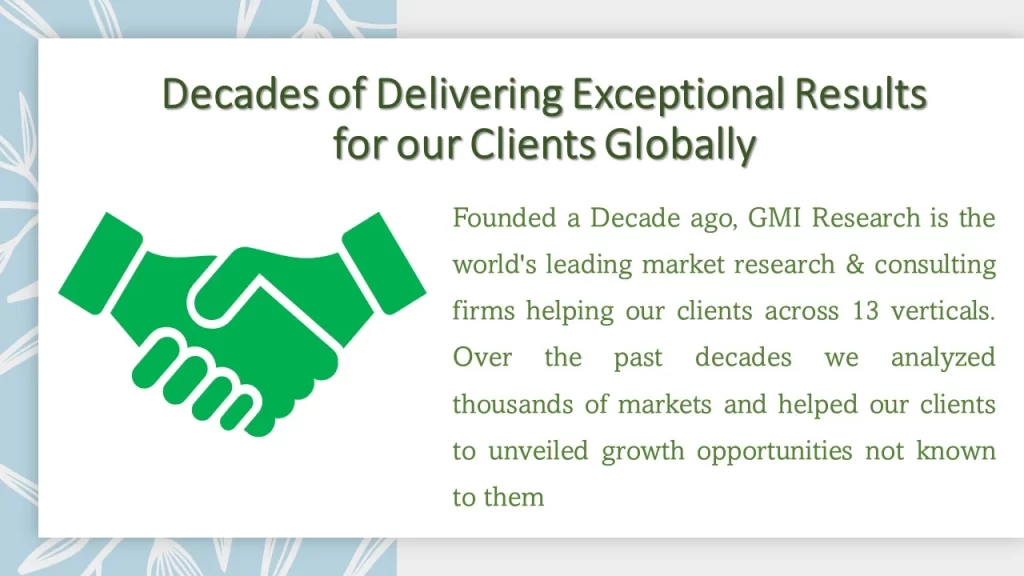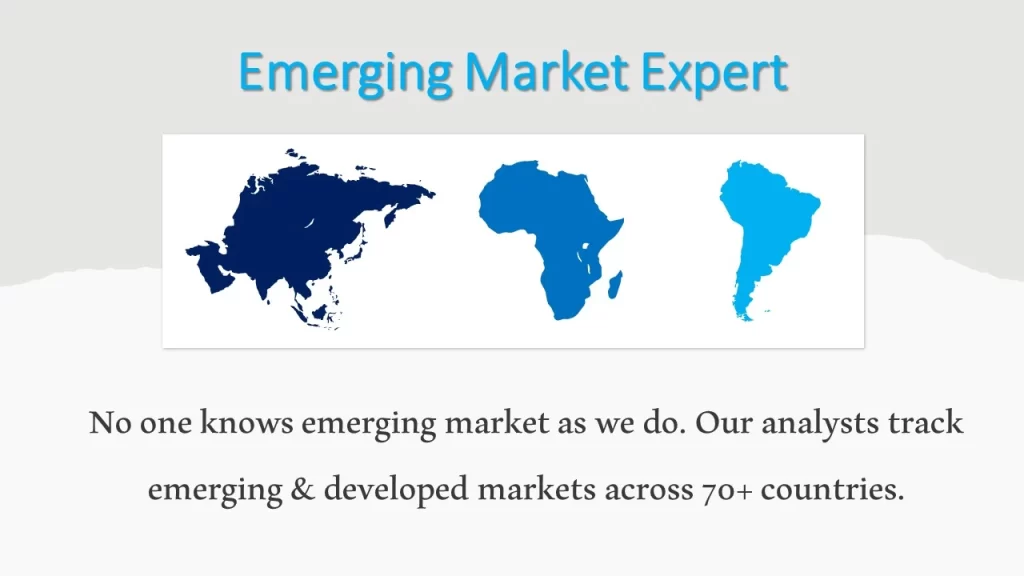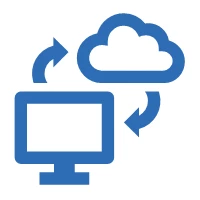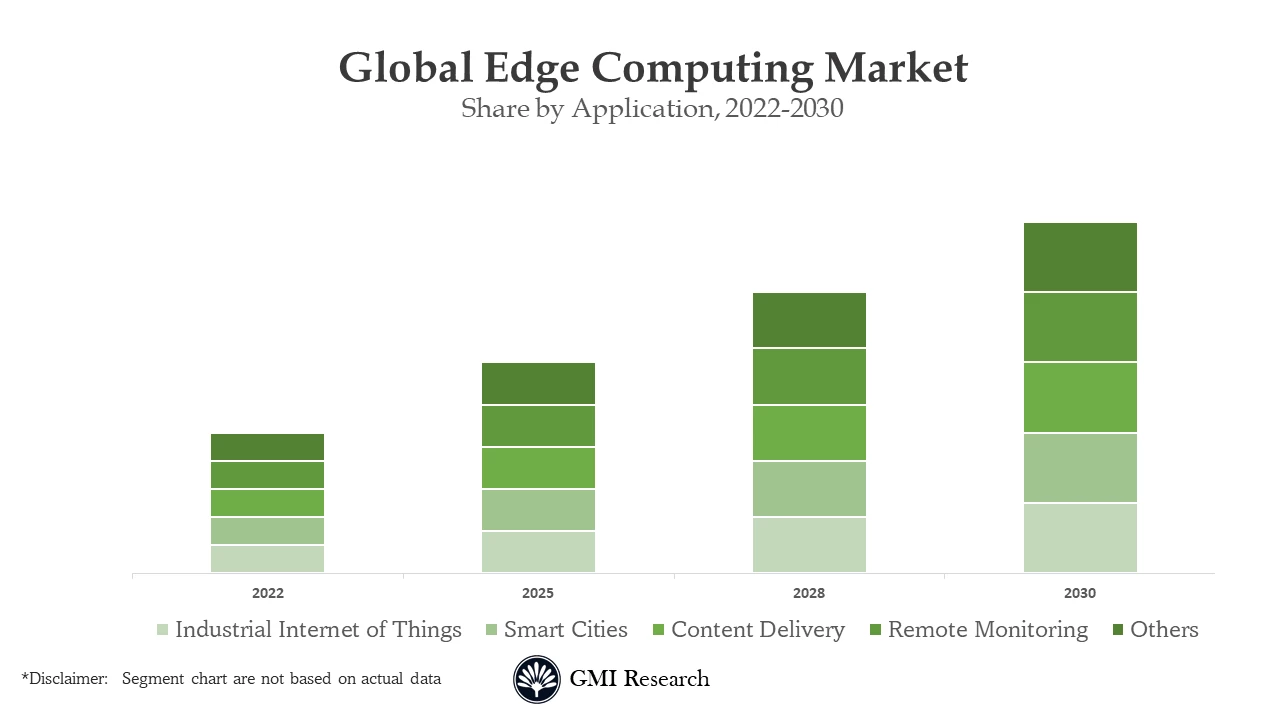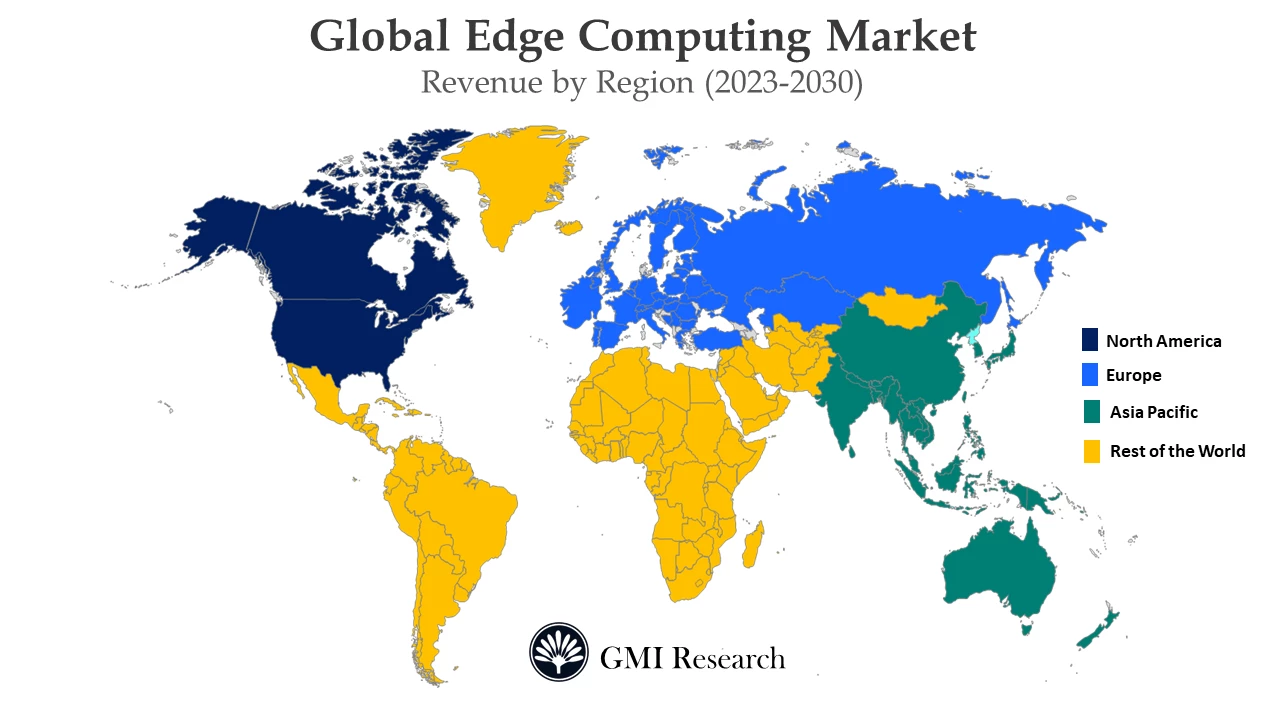No products in the cart.
Edge Computing Market Size, Share, Trends and Growth Report – Global Opportunities & Forecast, 2023-2030
Report Description
Table Of Content
Sample Request
Request For Customization
Edge Computing Market generated a revenue of USD 5,700.2 Million in 2022 and and forecast to touch USD 53,826.5 million in 2030 and is expected to expand at a CAGR of 32.4% during forecast period (2023-2030), due to the growing adoption in various industries including manufacturing, IT, BFSI, and telecom.
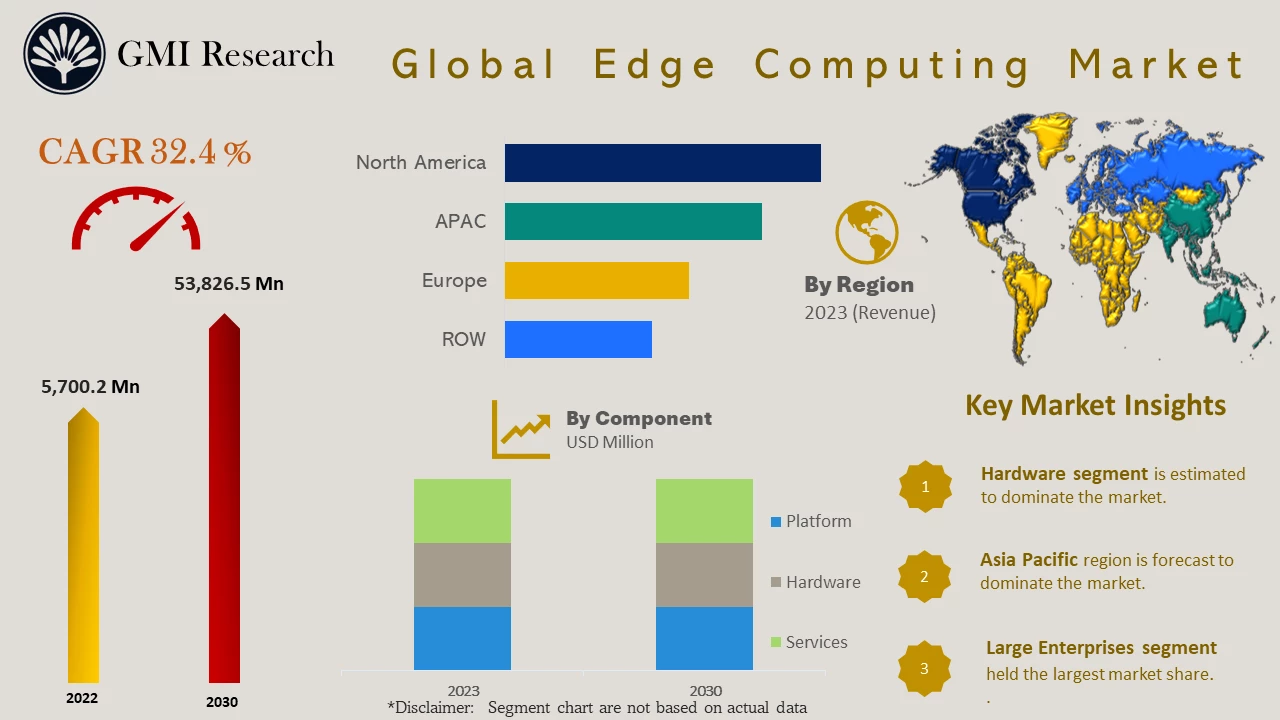 To have an edge over the competition by knowing the market dynamics and current trends of “Edge Computing Market”, request for Sample Report here
To have an edge over the competition by knowing the market dynamics and current trends of “Edge Computing Market”, request for Sample Report here
Major Edge Computing Market Drivers
Global edge computing market is primarily driven by rising computing power of connected devices, growing workload on cloud infrastructure, increase in data volumes, and rising utilization of industrial IoT. The advancement in 5G applications in several industries and the adoption of IoT across the organization will improve the edge computing market growth. High adoption of smart and connected devices by diverse industries is an opportunity for the edge computing market globally. An increase in digitalization results in a rise in data generation at a high volume. This surge in data volume and traffic demands the bandwidth of higher network and edge computing solutions. Also, the United Nations Economic Commission for Europe reported a 350% growth in data growth in 2019 compared to 2015. Decrease in low-latency processing, developing significance of big data, rise in adoption of 5G devices, and AI, and rising number of connected and smart devices, along with the growth in partnership and acquisitions with telecommunication operators and start-ups, are some of the key factors propelling the global edge computing market.
Rise in investment by the market players in R&D for advancing communication infrastructure and innovation in 5G technologies will offer enormous market growth opportunities for edge computing. Additionally, businesses, to reduce the latency of clients, and develop the core connectivity among the business activities, can effectively use edge computing solutions. In 2022, Verizon and AWS aligned to develop mobile edge computing for 30% more metropolitan areas in the United States, including, Detroit, Charlotte, Los Angeles, and Minneapolis. This partnership focuses on decreasing the latency and the number of network legs required to connect from an application hosted on the software to the end user’s device. The dependency on internet connectivity, growing reliance on the cloud, and the fastest growth of IoT infrastructure are some key drivers fostering telecoms toward edge computing solutions and driving the growth of the edge computing market size globally. Moreover, the rise in security system monitoring, adoption of IoT devices, growing demand for self-driving cars or autonomous cars, increase in demand for medical monitoring devices, and positive demand for video conferencing, are a few more key factors that boost the global edge computing industry. However, edge computing market growth is restrained by the high initial capital investment. The safety of an all-inclusive computing network leads to huge costs for the operators, thereby hindering market growth. Whereas, analyzing and gathering the huge volume of data and the increase in demand for higher bandwidth to accommodate connected devices are presenting positive market growth globally.
For instance, for communication and other organizations with innovative technologies, integration of 5G, IoT, and edge computing would be transformational. In edge computing, communication service providers are investing significantly to meet the increasing demand for edge computing. For instance, in 2022, Ball extended its partnership with AWS, focusing on introducing the first public Multi-Access Edge Computing with AWS Wavelength in Canada. The advent of 5G networks is predicted to bring significant growth opportunities in the edge computing industry.
Do you want to know more about the Research process and detailed Methodology, Request Research Methodology of this report
Hardware segment is predicted to rise at substantial growth in the forecast period
Rapid growth in the hardware segment was propelled by high adoption of advanced technologies like sensors, routers, and gateways in advanced technologies such as EDC and AMR. In addition, as hardware is attaining prevalence in different industries is estimated to hold a significant value of market share in the forecast period. Also, the increasing preference for high-performance hardware due to the high adoption of advanced technologies like artificial intelligence, and machine learning around different segments, is enhancing the segment’s growth.
 SMEs segment is predicted to grow at the fastest CAGR.
SMEs segment is predicted to grow at the fastest CAGR.
Among SMEs, growth of the global edge computing market forecast will be high due to growing awareness of 5G integrated devices and edge computing benefits among IT industries and potential customers. The integration of edge and cloud computing using fast 5G networks to develop and increase bandwidth, further enables small businesses to proceed with vast data volumes rapidly to cater to a larger customer base. 5G facilitates high data volumes for organizations and individuals. Also, small businesses deliver effective services and top-notch customer experience by using edge computing. Users can store data in their connected and smart devices by using edge computing, eliminating the requirement for external servers. By using edge computing solutions, small businesses ensure the safety of important functions that require automation
In case, any of your pain points areas are not covered in the current scope of this report, Request for Free Customization here
Asia Pacific is estimated to grow at the fastest rate in the forecast period
Asia Pacific region is predicted to rise at the fastest CAGR in the forecast period due to the increasing demand for innovative computational infrastructure around developing nations. Also, the region’s market growth is propelled by favorable government regulations which greatly aid the IT infrastructure. Increasing number of SMEs in emerging nations around the Asia Pacific, and a rise in the utilization of edge computing are enhancing the edge computing market growth. The speedy digitalization, and high adoption of IoT and 5G devices around underdeveloped nations such as India, Japan, South Korea, and China, foster the market growth around the region. The existence of telecom market players and the development of connected devices also drive the regional market growth.
North America to hold the highest market size in the forecast period.
North America region is predicted to generate the maximum revenue in the forecast period due to growing investment in developing edge and telecom infrastructure. Rise in the number of smart and connected devices and positive growth of big data volume introduced by these devices are predicted to boost the market growth in North America. Due to significant emergence of edge-oriented startups, rise in the usage and introduction of smart devices which expand its global network and edge collaboration with other countries increase the demand for edge computing solutions in North America. Also, growing disposable income of customers and high penetration of products with edge computing such as autonomous vehicles, and others fosters the demand for edge computing in this region
 Top Market Players
Top Market Players
Various notable players operating in the market include Hewlett Packard Enterprise Development LP, Cisco Systems, Inc., Dell Inc., Huawei Technologies Co., Ltd., IBM, Nokia, FogHorn Systems, Amazon Web Services, Inc., MachineShop Inc, and Saguna Networks Ltd. among others.
Key Developments:
-
- In 2023, Dell Technologies introduced the NativeEdge Software, focusing on simplifying the deployment and management difficulties of edge devices for remote-focused businesses. This Software, succeeding Dell’s Project Frontier, serves as an edge computing solution, offering clients flexibility in software, multi-cloud tools, IoT, and operational technology. It streamlines the procedure, enabling convenient automation and management of edge infrastructure.
- In 2023, Nokia released 4 third-party applications for MX Industrial Edge, enabling enterprises to connect, analyze, and collect data from different sources, like video cameras. The initiative enables businesses to unlock the value from their functional technology assets through robust and prevention on-premises edge solutions.
- In 2023, Dell Technologies and Ericsson joined each other to introduce open cloud networks, enabling customers to choose their infrastructure while ensuring, high-performance standards at the far edge. This collaboration includes integrating Dell PowerEdge servers, including the specialized PowerEdge XR8000 and XR5610, into Ericsson’s Cloud RAN solutions. These servers are personalized for telecom, mobile-edge computing workloads, and Open RAN, delivering Cloud RAN customers with growing choices and flexibility. Dell PowerEdge servers play an important role in simplifying the Cloud RAN journey owing to their excellent performance, resilience, compact designs, and seamless integration with larger networks.
- In 2023, Cisco launched Cisco Edge Intelligence, a solution designed to develop data governance and control. This system extracts intelligent insights from connected assets, ultimately developing an organization’s competitiveness. It is constructed on Cisco’s top-tier multi-layered security framework, ensuring significant protection for the collected data and insights.
- In 2023, HPE acquired Athonet, integrating its technology into the prevailing Communications Service Provider (CSP) and Aruba networking enterprise offerings. This integration introduces a private networking portfolio, speeding up the digital transformation from edge to cloud. Advantages include faster private 5G deployments, developed private networks, new revenue streams from telecom market players via differentiated 5G and Wi-Fi services, simplified functional management, and cost-effectiveness through 5G orchestration and zero-touch automation, allowing the delivery of different workloads from edge to cloud.
- Kyndryl and Nokia announced a 3-year expansion and extension of their global network and edge partnership. This collaboration will concentrate on creating and delivering cutting-edge LTE and G private wireless services, along with Industry 4.0 solutions to clients globally.
- In 2020, Cisco Systems, Inc. partnered with Microsoft for technologies targeting IoT and edge computing. Through this partnership, the companies planned to attract more customers by offering a deeper and broad product portfolio, which they could provide separately.
- In 2019, Dell Inc. collaborated with AT&T on 5G Software Infrastructure and Open Source Edge Computing. The companies planned to explore the development of major open infrastructure technology areas for the next-generation network edge.
Segments covered in the Report:
The global edge computing market has been segmented on the basis of component, application, organization size, vertical, and regions. Based on the component, the market is segmented into the Software, hardware, and services. Based on application, the market is segmented into the industrial internet of things, smart cities, content delivery, remote monitoring, augmented reality & virtual reality, and others. Based on organization size, the market is segmented into small & medium-sized enterprises and large enterprises. Based on vertical, the market is segmented into energy & utilities, manufacturing, telecommunications, government & defense, retail & consumer goods, media & entertainment, healthcare & lifesciences, transportation & logistics, and others.
For detailed scope of the “Edge Computing Market” report request a Sample Copy of the report
|
Report Coverage |
Details |
| Market Revenues (2022) |
USD 5,700.2 Million |
| Market Base Year |
2022 |
| Market Forecast Period |
2023-2030 |
| Base Year & Forecast Units |
Revenues (USD Million) |
| Market Segment | By Component, By Application, By Organization Size, By Vertical, By Region |
| Regional Coverage | Asia Pacific, Europe, North America, and RoW |
| Companies Profiled | Hewlett Packard Enterprise Development LP, Cisco Systems, Inc., Dell Inc., Huawei Technologies Co., Ltd., IBM, Nokia, FogHorn Systems, Amazon Web Services, Inc., MachineShop Inc, and Saguna Networks Ltd., among others; a total of 10 companies covered. |
| 25% Free Customization Available | We will customize this report up to 25% as a free customization to address our client’s specific requirements |
Market Segmentation
Global Edge Computing Market by Component
-
- Software
- Hardware
- Services
Global Edge Computing Market by Application
-
- Industrial Internet of Things
- Smart Cities
- Content Delivery
- Remote Monitoring
- Augmented Reality & Virtual Reality
- Others
Global Edge Computing Market by Organization Size
-
- Small & Medium-Sized Enterprises
- Large Enterprises
Global Edge Computing Market by Vertical
-
- Energy & Utilities
- Manufacturing
- Telecommunications
- Government & Defense
- Retail & Consumer Goods
- Media & Entertainment
- Healthcare & Lifesciences
- Transportation & Logistics
- Others
Global Edge Computing Market by Region
-
-
North America Edge Computing Market (Option 1: As a part of the free 25% customization)
- By Component
- By Application
- By Organization Size
- By Vertical
- US Market All-Up
- Canada Market All-Up
-
Europe Edge Computing Market (Option 2: As a part of the free 25% customization)
- By Component
- By Application
- By Organization Size
- By Vertical
- UK Market All-Up
- Germany Market All-Up
- France Market All-Up
- Spain Market All-Up
- Rest of Europe Market All-Up
-
Asia-Pacific Edge Computing Market (Option 3: As a part of the free 25% customization)
- By Component
- By Application
- By Organization Size
- By Vertical
- China Market All-Up
- India Market All-Up
- Japan Market All-Up
- Rest of APAC Market All-Up
-
RoW Edge Computing Market (Option 4: As a part of the free 25% customization)
- By Component
- By Application
- By Organization Size
- By Vertical
- Brazil Market All-Up
- South Africa Market All-Up
- Saudi Arabia Market All-Up
- UAE Market All-Up
- Rest of world (remaining countries of the LAMEA region) Market All-Up
-
Major Players Operating in the Edge Computing Market (Option 5: As a part of the Free 25% Customization – Profiles of 5 Additional Companies of your Choice)
-
- Hewlett Packard Enterprise Development LP
- Cisco Systems, Inc.
- Dell Inc.
- Huawei Technologies Co., Ltd.
- IBM
- Nokia
- FogHorn Systems
- Amazon Web Services, Inc.
- MachineShop Inc
- Saguna Networks Ltd.
Frequently Asked Question About This Report
Edge computing Market [UP26A-00-1119]
The major factors driving the growth of the edge computing market include the increase in the adoption of such technology by the telecommunication companies and the growing penetration of the digital transformation, which has resulted in an increase in the implementation of IoT across various organizations.
Top Leading players includes Hewlett Packard Enterprise Development LP, Cisco Systems, Inc., Dell Inc., Huawei Technologies Co., Ltd., IBM, Nokia, FogHorn Systems, Amazon Web Services, Inc., MachineShop Inc, and Saguna Networks Ltd. among others.
Edge Computing Market generated a revenue of USD 5,700.2 Million in 2022 and and forecast to touch USD 53,826.5 million in 2030
Asia-Pacific region is expected to increase at a higher rate during the forecast period due to the growing penetration of the edge computing solutions across various countries such as Japan, China, and India, among others.
- Published Date: Nov- 2022
- Report Format: Excel/PPT
- Report Code: UP26A-00-1119
Get Free 25% Customization in this Report
Licensing Options
Single-User License:
The report is used by the purchaser (One Individual) only
Multi-User License:Report is shared with maximum 5 users (employees) including the purchaser of the purchasing corporation only
Corporate License:
Report is shared with unlimited user (employees) of the purchasing corporation only
The report is used by the purchaser (One Individual) only
Multi-User License:Report is shared with maximum 5 users (employees) including the purchaser of the purchasing corporation only
Corporate License:
Report is shared with unlimited user (employees) of the purchasing corporation only
Edge Computing Market Size, Share, Trends and Growth Report – Global Opportunities & Forecast, 2023-2030
$ 4,499.00 – $ 6,649.00
SKU: UP26A-00-1119
Categories: Information Communication Technology, Published, Report Store
Tags: Edge Computing Market, Edge Computing Market Dynamics, Edge Computing Market Growth, Edge Computing Market Key players, Edge Computing Market Opportunity, Edge Computing Market Size, Edge Computing Market Trends
Why GMI Research
